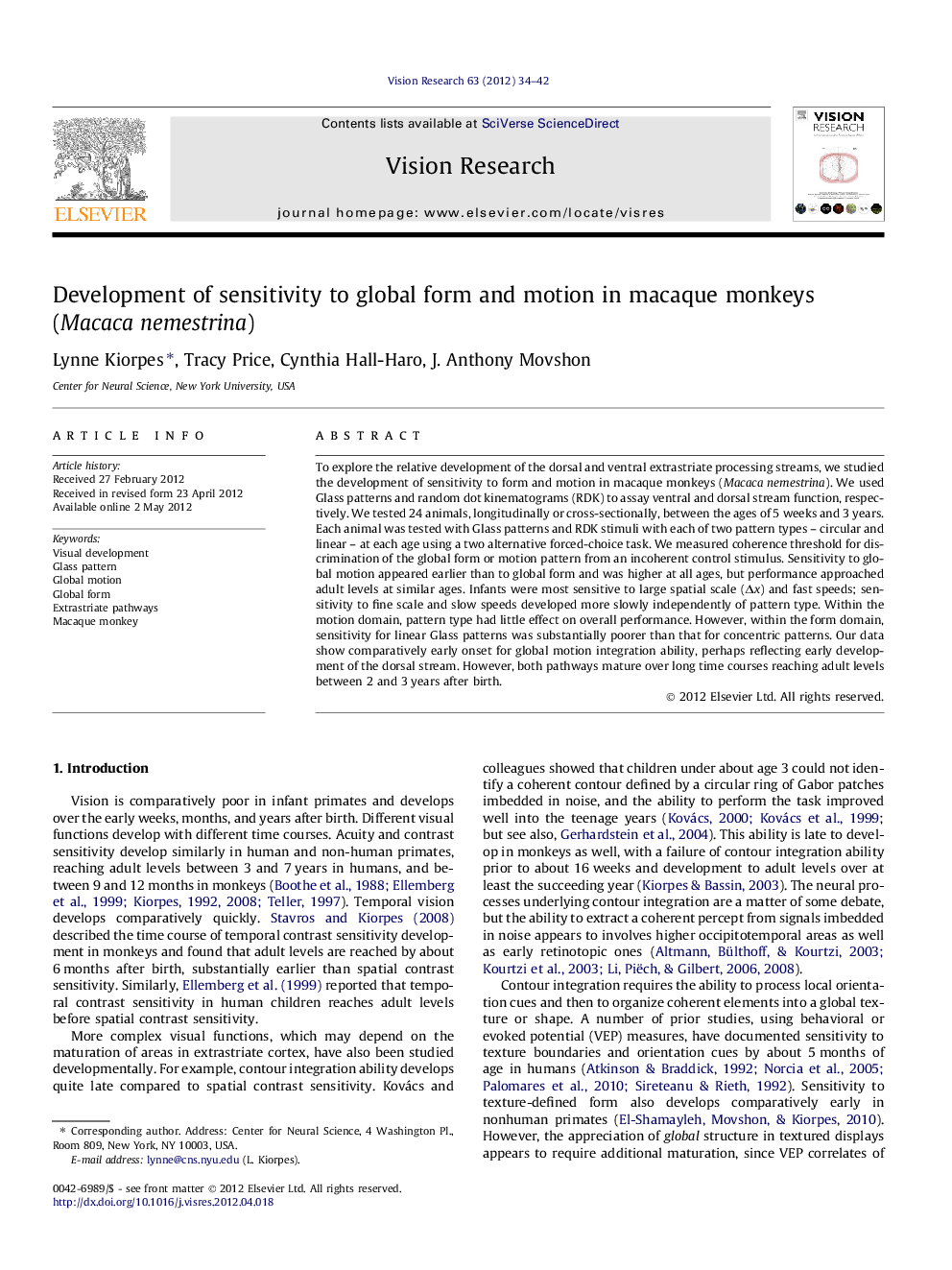| Article ID | Journal | Published Year | Pages | File Type |
|---|---|---|---|---|
| 4033992 | Vision Research | 2012 | 9 Pages |
To explore the relative development of the dorsal and ventral extrastriate processing streams, we studied the development of sensitivity to form and motion in macaque monkeys (Macaca nemestrina). We used Glass patterns and random dot kinematograms (RDK) to assay ventral and dorsal stream function, respectively. We tested 24 animals, longitudinally or cross-sectionally, between the ages of 5 weeks and 3 years. Each animal was tested with Glass patterns and RDK stimuli with each of two pattern types – circular and linear – at each age using a two alternative forced-choice task. We measured coherence threshold for discrimination of the global form or motion pattern from an incoherent control stimulus. Sensitivity to global motion appeared earlier than to global form and was higher at all ages, but performance approached adult levels at similar ages. Infants were most sensitive to large spatial scale (Δx) and fast speeds; sensitivity to fine scale and slow speeds developed more slowly independently of pattern type. Within the motion domain, pattern type had little effect on overall performance. However, within the form domain, sensitivity for linear Glass patterns was substantially poorer than that for concentric patterns. Our data show comparatively early onset for global motion integration ability, perhaps reflecting early development of the dorsal stream. However, both pathways mature over long time courses reaching adult levels between 2 and 3 years after birth.
► Visual development proceeds differently for different visual functions. ► Perception of global motion is evident earlier than perception of global form. ► Development of form and motion perception are prolonged and completes at similar ages. ► Results suggest that dorsal stream areas begin to develop earlier than ventral areas.
